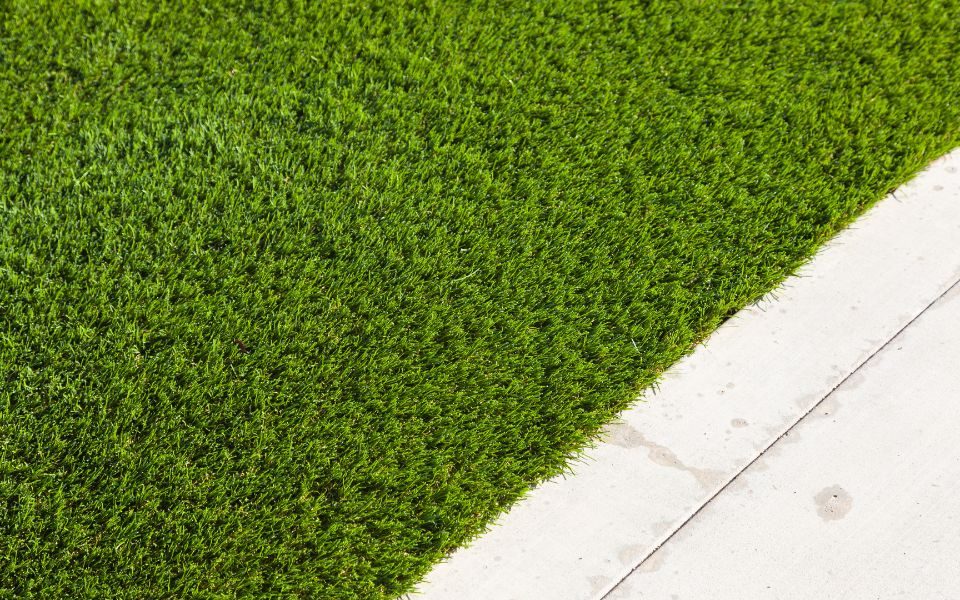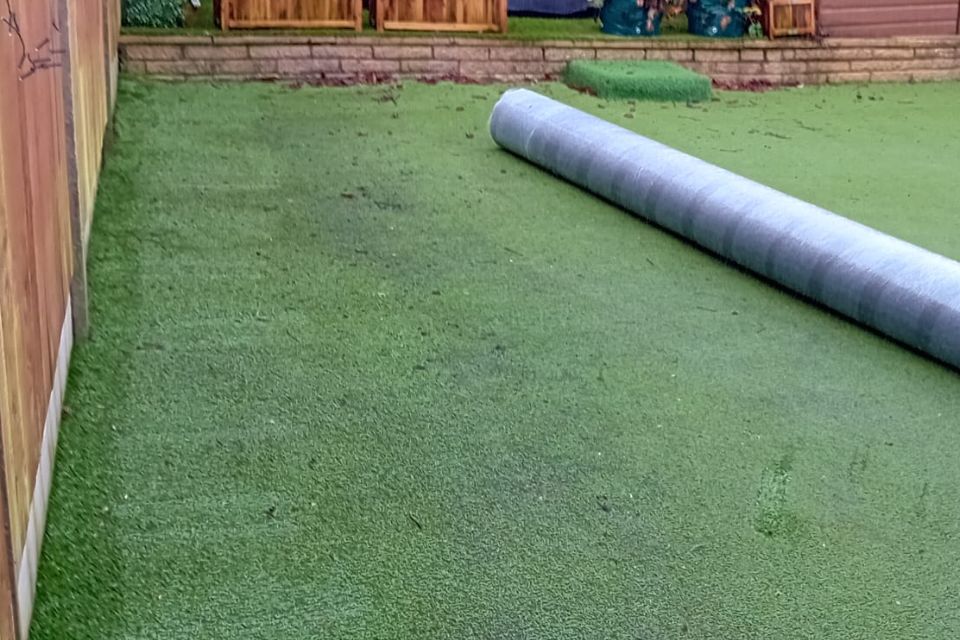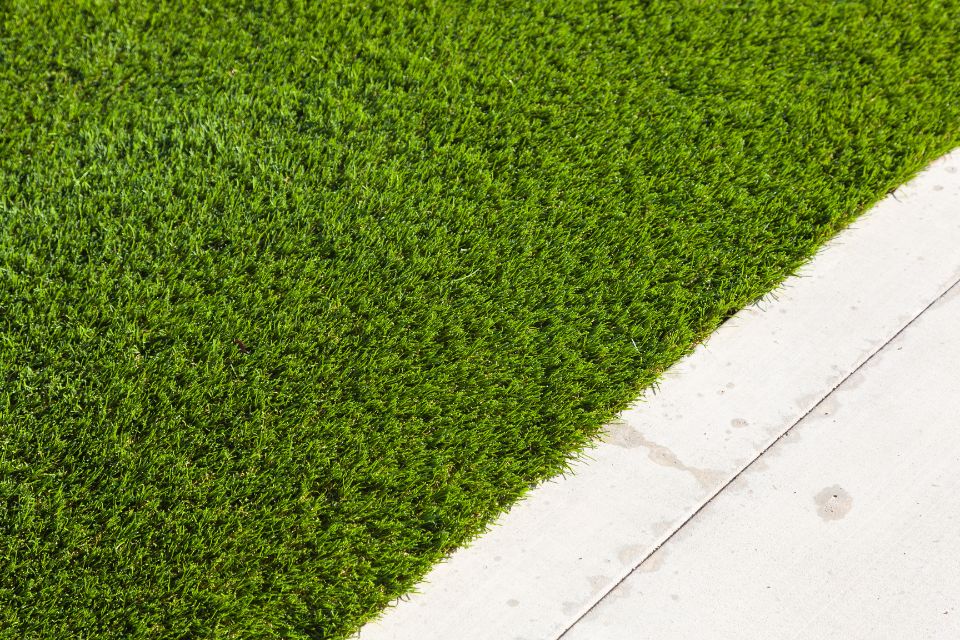
What are the signs that it’s time to replace artificial grass?
What are the signs that it’s time to replace artificial grass? Knowing when it’s time to replace artificial grass is essential to maintain the aesthetics and functionality of outdoor spaces. Here are the signs that indicate it’s time for replacement. See picture below.
Signs It’s Time to Replace Artificial Grass
Artificial grass has gained popularity for its low maintenance and long-lasting properties, but like any outdoor surface, it requires periodic replacement to maintain its aesthetics and functionality. Recognising the signs that indicate it’s time to replace your artificial grass is crucial for preserving the look and usability of your outdoor living space. Let us explore the tell-tale signs that suggest artificial grass replacement is necessary and provide insights into the process.
Matting and Flattening
Over time, artificial grass fibres may become flattened or matted, particularly in high-traffic areas. Excessive matting not only affects the appearance of the grass but also compromises its functionality. When the fibres lose their resilience and bounce-back capability, the grass may appear worn out and less vibrant.

Fading
Prolonged exposure to extreme sunlight can cause artificial grass to fade over time. Fading is a common issue, especially in regions with intense sunlight or extreme weather conditions. The once vibrant green colour may become dull or discoloured, detracting from the overall aesthetic appeal of your garden.
Damage
Damage from various sources, such as pets, sharp objects, or heavy furniture, can compromise the integrity of artificial grass. Tears, holes, or rips in the grass are not only unsightly but also be a trip hazard. If the damage is extensive and cannot be effectively repaired, a replacement may be the best solution.
Poor Drainage
Effective drainage is essential for maintaining the health and longevity of artificial grass. Poor drainage can result in water pooling on the surface, leading to issues such as mould growth, unpleasant smells, and potential damage to the backing material. Despite efforts to address drainage problems, persistent issues may necessitate replacement.
Smells
Accumulation of organic debris, such as pet waste or leaves, can lead to unpleasant smells over time. Despite regular cleaning, persistent smells may indicate underlying issues with the artificial grass that warrant replacement. Proper drainage and ventilation are essential for preventing odour build-up in artificial grass.
Mould or Mildew Growth
Inadequate drainage or prolonged exposure to moisture can create an environment conducive to mould or mildew growth. If mould or mildew is present on the surface or backing of the artificial grass, replacement may be necessary to ensure a healthy and safe outdoor environment. Regular cleaning and proper maintenance can help prevent mould growth.
Excessive Wear and Tear
High-traffic areas or areas subjected to heavy use may experience accelerated wear and tear over time. Signs of excessive wear and tear include fraying edges, exposed backing material, or visible signs of deterioration that cannot be remedied through maintenance. If the grass fibres are significantly worn down, replacement may be the most viable option.
Visible Stains or Discolouring
Stubborn stains or discolouring that cannot be removed through regular cleaning may detract from the overall appearance of the artificial grass. If stains persist and compromise the aesthetic appeal of the area, replacement may be the best course of action. Choosing stain-resistant artificial grass can help minimise discolouring over time.
Loss of Resilience
As artificial grass ages, it may lose its resilience and bounce-back capability, resulting in a flat or compressed appearance. Loss of resilience can affect the performance of the grass, particularly in areas where shock absorption is important, such as kids playgrounds or sports fields. If the grass feels flat and lacks elasticity, it may be time for replacement.
Age
Like any outdoor surface, artificial grass has a finite lifespan and will eventually require replacement. If the artificial grass is nearing the end of its expected lifespan and exhibiting multiple signs of wear and tear, replacement may be necessary to maintain the integrity and functionality of your garden. Regular inspections and proactive maintenance can help prolong the lifespan of your artificial grass.

Frequently Asked Questions (FAQs)
Q1: How long does artificial grass typically last?
Artificial grass can last up to 15 to 25 years or more with proper care and maintenance, depending on factors such as the initial installation, quality, usage, and environmental conditions.
Q2: Can artificial grass be repaired instead of replaced?
In some cases, minor damage or wear and tear can be repaired through patching or seam repair. However, extensive damage or degradation may require replacement of the entire area.
Q3: What are the benefits of replacing artificial grass?
Replacing artificial grass restores the aesthetic appeal and functionality of your garden or outdoor spaces, improving drainage, reducing smells, and enhancing safety.
Q4: How often should artificial grass be cleaned?
Routine cleaning of artificial grass, including removing debris and pet waste, should be performed as needed to maintain its appearance and functionality. Additionally, professional cleaning may be recommended periodically to remove embedded dirt and bacteria.
Q5: Can artificial grass fade over time?
Thought very rare, prolonged exposure to extreme sunlight can cause artificial grass to fade over time. A good artificial grass should be Ultra Violet resistant which helps mitigate fading.
Q6: What are the environmental benefits of artificial grass replacement?
Replacing artificial grass with newer, more sustainable materials like the ARTTRAGrass® 100% recyclable artificial grass can reduce water usage, as it drains 5x faster than standard alternatives. Having artificial turf installed also minimises the need for chemical fertilizers and pesticides, and promote eco-friendly landscaping practices.
Q7: How much does it cost to replace artificial grass?
The cost of replacing artificial grass depends on factors such as the size of the area, the quality of the material, and any additional preparatory work required. On average, replacement costs approximately £60 per sqm.
Q8: Can artificial grass be recycled?
Yes, many artificial grass manufacturers offer recycling programs for old or worn-out artificial grass, diverting it from landfills and repurposing it for other applications.
Q9: What are the benefits of professional installation for artificial grass replacement?
Professional installation ensures proper preparation, installation, and finishing of the artificial grass, resulting in a long-lasting and aesthetically pleasing garden.
Q10: How can I determine if my artificial grass needs replacement?
Inspecting the artificial grass for signs of wear and tear, poor drainage, smells, or mould growth can help determine if replacement is necessary. Our professional team of installers can provide further guidance based on the specific condition of your current natural grass.
In a Nutshell
Recognising the signs that indicate it’s time to replace artificial grass is essential for maintaining the aesthetics and functionality of your garden. Whether it’s excessive wear and tear, fading, damage, or drainage issues, addressing these signs promptly can help prevent further deterioration and ensure a long-lasting and aesthetically pleasing outdoor environment. By staying vigilant and proactive in monitoring the condition of artificial grass, you can make informed decisions about when to invest in replacing your lawn, ultimately enhancing the enjoyment and value of your garden.
If you a looking for a professional artificial grass installer in Milton Keynes, and surrounding areas, do not hesitate to contact us at 0800 433 2353. Alternatively, you can contact us via email at enquiries@miltonkeynesartificialgrass.co.uk or click here. We cover the whole of Bedfordshire, Berkshire, Buckinghamshire, Cambridgeshire, Hertfordshire, Northamptonshire, Oxfordshire, and the London area.
